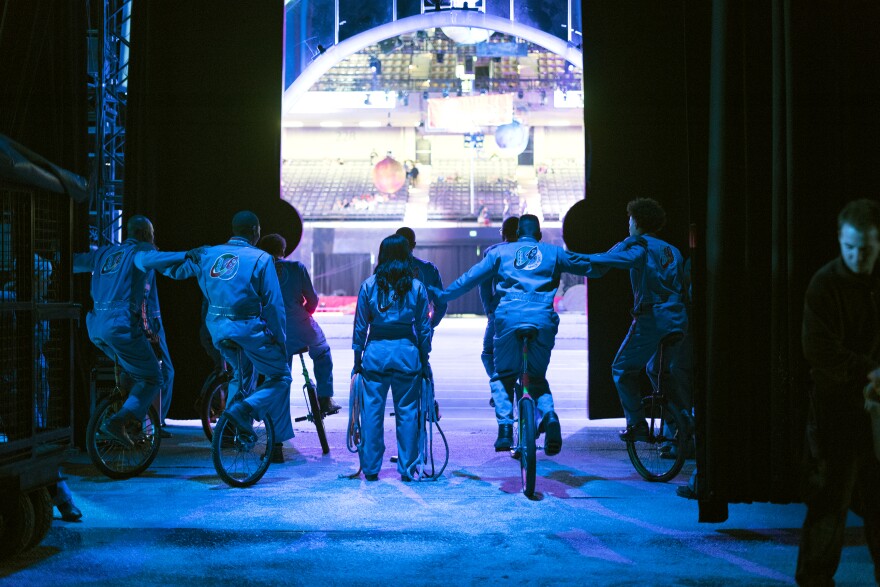On the steps above the makeshift stables, the circus priest is getting nostalgic.
"I did a baptism once in Fort Worth, Texas. ... I came in on an elephant carrying the baby, which was four weeks old," the Rev. Jerry Hogan says. "Now that baby is 15. I've married a lot of these kids and I've baptized their kids, and watched them grow."
It's late April at Baltimore's Royal Farms Arena, in the closing weeks of the Ringling Bros. and Barnum & Bailey's "Out of This World" tour.
The last-ever show is Sunday night in Uniondale, N.Y. The circus isn't profitable any more, according to the company that runs it. And especially once the elephants were gone — after public battles with animal rights activists — ticket sales just couldn't keep it afloat.
That means the end of the famous traveling circus show, with a ringmaster and big cats and clowns and trapeze acts ... the stuff of nostalgia for generations.
But it's the end of much more than just a show, Hogan says.

"The performance is 2 1/2 hours," he says, as horses are saddled and kids carried past us to the nursery. "The circus is the whole experience."
It's baptisms on elephants, pies in the face on birthdays, raising a family on the circus train as the American landscape rolls by. And it's spectacular acts of skill in the rings and outside them — a logistical feat polished over 146 years and preparing for the final curtain call.
'A city that folds itself up like an umbrella'
"The Greatest Show on Earth" started in 1871 as a traveling museum and menagerie under the imprimatur of P.T. Barnum.
In 1895, the magazine McClure's wrote that "man's intelligence has devised nothing more compact, more orderly, more admirably adapted to its purpose, than the train of a great modern circus":
"It is a kingdom on wheels, a city that folds itself up like an umbrella. Quickly and swiftly every night it does the work of Aladdin's lamp, picking up in its magician's arms theatre, hotel, schoolroom, barracks, home, whisking them all miles away and setting them down before sunrise in a new place."
More than a century later, little has changed. The circus still rolls across the country carrying hundreds of performers, stagehands and children in a mile-long train. These days, they call it a "town without a ZIP code."
"It's the largest theater performance in human history on the longest passenger train in human history," says Rhett Coates, a backstage crew member, as he stands in a vestibule of the train. He's worked off and on for Ringling Brothers since the 1980s and has an encyclopedic knowledge of the circus trains.
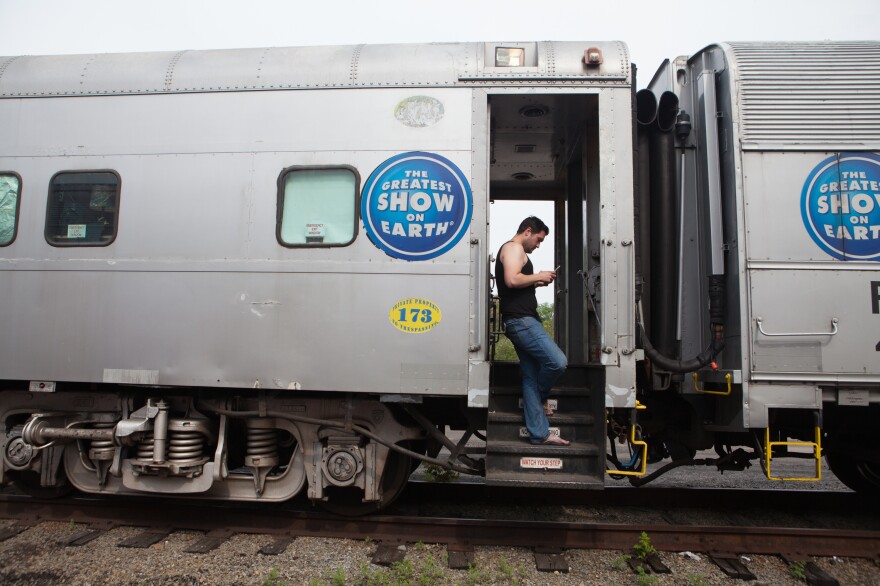
Coates says his mother was a singer and his stepfather worked on the Atlantic Coastline railway. He thought he'd have to choose between trains and the performing arts.
"But God had another way," he says. He points toward his window — on car 72. The quarters aren't roomy, but "it's comfortable," he says. "It's quiet. It's astonishing."
The train includes the "pie car," the restaurant to feed the crew and performers. There's a mobile repair shop and scores of huge wagons full of supplies, props and gear. There's a nursery and a school.
There's nothing quite like living on a train, says sound technician Greg Hartfield. "You open up the blinds, drinking your coffee, and you're just seeing cities go by you. You're seeing lakes, you're seeing ponds, you're seeing mountains ... from your bedroom window, as you drink your coffee," he says.
And America watches back. When the train crossed roads, Coates says, you could see frustration melt into awe as stopped motorists recognized the logo on the side of the train.
"Their faces light up," he says. "It's a total change in attitude."
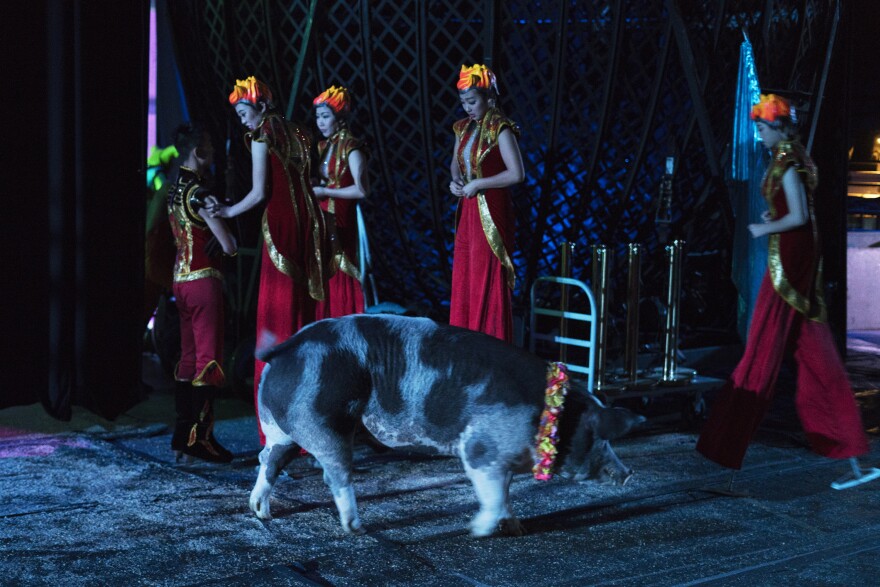
The modern menagerie
The back hallways and loading docks of the arena in Baltimore are packed with piles of carrots, mounds of hay and rows of holding pens.
Kanat Tchalabaev and Tatiana Tchalabaeva, who lead the Cossack Riders, have squeezed their 21 horses into one of those hallways, across from offices and meeting rooms. They've been performing with Ringling for years.
Tchalabaeva was a gymnast, and then an acrobat with the Moscow State circus, before she met Kanat, a horse trainer.

"I was so scared of horses," she said. She never dreamed she'd perform with them. But then her mother-in-law retired. "My husband just said, 'OK, let's go, time to learn!' " she says with a laugh.
Now there's no fear. She pats one of her stallions on the neck and explains that they, too, are fearless — trained over many years, until they're totally comfortable with a rider dropping between their legs or flipping on their backs.
In corners and spare spaces, the crew also have to find room for four goats, three llamas, four alpacas, two donkeys, two kangaroos, a dozen lions and tigers, more than two dozen dogs ... and two 700-pound pigs.

Trainer Hans Klose coaxes one out into the open with some help from an apple, and explains that with a pig that big, it's a question of persuasion. There's no chance of a leash.
"Roscoe was 30 pounds when I went to the farm and discovered his talent," Klose says. "He was destined for bacon, and we saved him."
Klose, who only recently added pigs to his dog show, is a second-generation circus performer. "My dad always told me once you learn the skills of the circus, no one can ever take it away from you," he says. "You can always make a living and you'll have it your whole life."
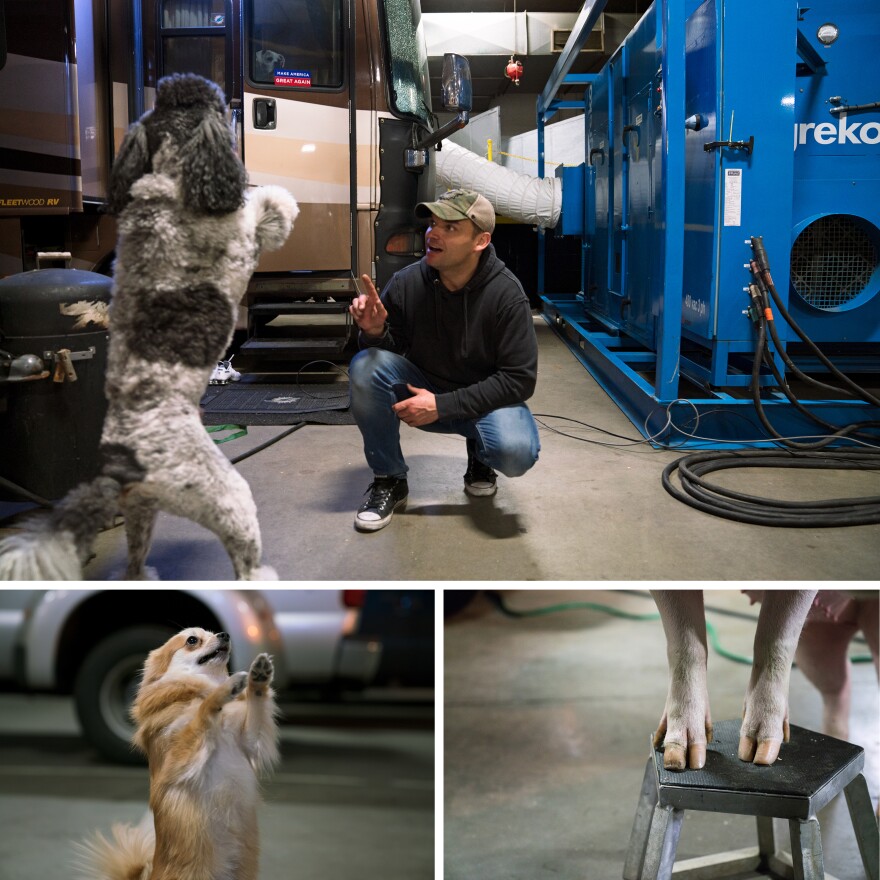
Countdown to opening night
Meanwhile, crew members are racing against the clock to transform the arena floor into a circus stage. The days of the big top are long gone, but the fast-paced choreography remains.
"I'd say 60 percent of what we do is moving the show, setting it up and tearing it down," says Assistant General Manager Peter Gold.
He points out the masses of black trusses on rubber mats over the arena's ice floor. Over the course of the next 10 hours, the trusses will be bolted together into a massive structure that holds all of the lights, trapezes, projectors and props — not to mention the tiger cage.
It will be all but invisible when the show is happening, but Gold says it's the heart of the performance.
The grid, as it's known, takes some 30 hours to fully set up and weighs 59,000 pounds. The finer points of its assembly are, literally, a matter of life and death. And getting it right the first time is essential: If anything goes wrong once it's lifted, someone has to climb 40 feet into the air to fix it.

There are other big circuses out there, but Gold says they don't travel as often or as intensely. And there are other traveling spectacles, but they don't face all the technical challenges of a circus. One crew member compares his job to the grueling seafaring work on The Deadliest Catch, with better weather.
"That's what defines the circus, if you think about it," says Roman Garcia, the general manager of the show. "People come to see the circus because they know they're going to see something like, 'Oh my god, how did they do that? That's an impossible feat!'
"Not only in performance, but behind the scenes," he says, "we do things that are like — 'Oh my god, how did we do this?' "

'This is my family'
Walking through the center of the arena, Gold points out the trapeze artist doing safety checks on his equipment. Gold used to swing on the trapeze himself, as a performer. He got hooked on trapeze on vacation in Club Med while he was in college. "One thing led to another," he says.
His wife, Undarmaa Gold, is a Mongolian contortionist. She choreographed a routine in this show — "giving the golden stage to the next generation," as she says with a laugh. She's also teaching their young son and the other circus kids some of her tricks.
Lots of the crew used to perform, and stayed with the circus long after they left the spotlight. Gerardo Medina is beneath the grid assembling the swaypole, a bendy vertical bar that holds a performer dangling in the sky. He used to do acrobatic tricks inside a giant spinning steel wheel. His wife used to be a trapeze artist and now works with the llamas, the goats and the kangaroo.
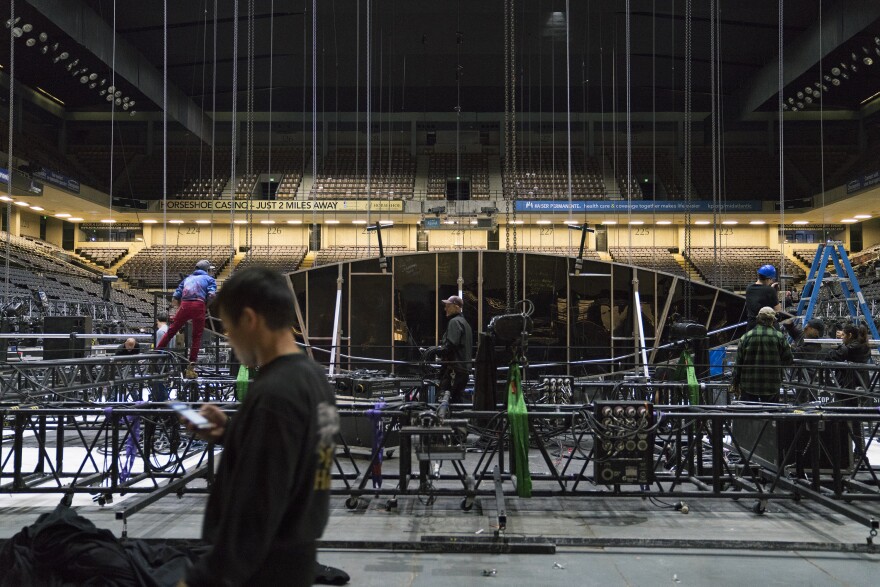
Lorelei Owens, the head of pyro, was once a fire-eater, glass walker and silk aerialist. She finished her college degree on the road with a small circus, then came to Ringling, instead of leaving the circus world. "These are my neighbors," she says. "These are my friends, this is my family."
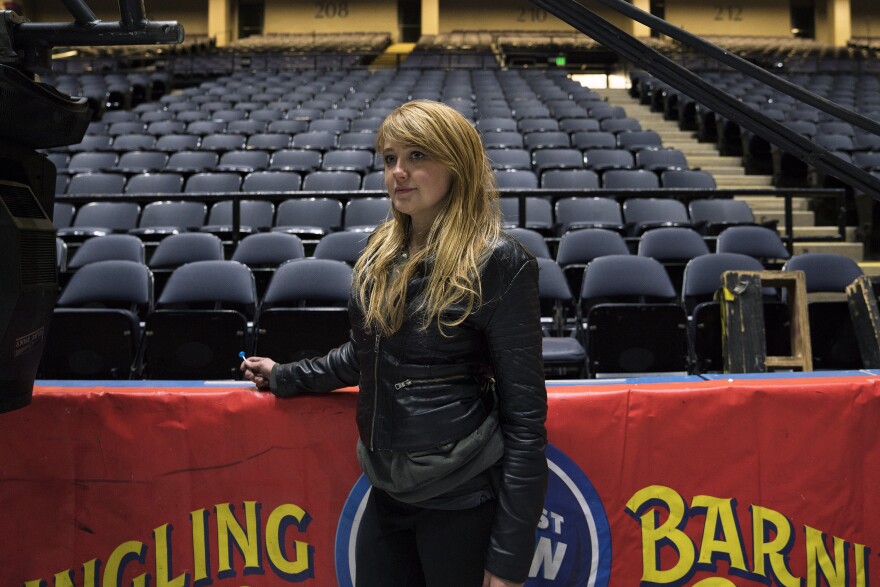
Some 300 people travel with the circus at any given time. Many fall in love, get married, have children. In some ways, it's a transient world — contracts end, the circus lineup rotates, and troupes are swapped out. But stick with the circus long enough, the Ringling crew say, and you'll see the same faces again and again, either on the train or at Ringling's winter home in Sarasota, Fla.
It's an ever-shifting community, but for a century and a half, it's always been there.
After the lights go down
So what happens after the last show in Uniondale?
Jerley Gutierrez says the end of the circus is shocking. Devastating. He's been with Ringling for decades, as a trapeze artist and now with concessions, where he runs the snow-cone stand.
"It's a good place and a safe environment to raise your kids," he says, his 2-year-old son sleeping in his arms. "I don't know where else on earth you can do something like this and still be with your family and have a job."
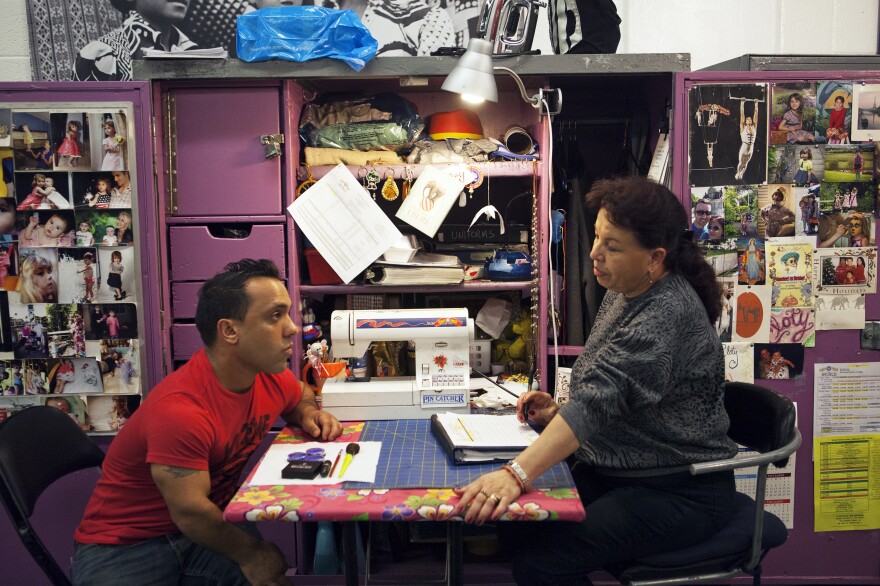
"It's not the end of the world. But in a kind of way, it is. For us."
He doesn't know what his family will do next.
Some people, like Owens, are joining other traveling shows. Some, like Klose the dog- and pig-trainer, will look for new venues for their performances, from fairs to half-time shows. Others are heading home — to Las Vegas or Sarasota, mostly – to regroup.
And some still don't know.

"We'll see," Tchalabaeva says, asked about her dozens of horses and her Cossack Riders and grooms. "Life will show us. ... We're just looking to see what's best out there, for all of us."
The circus priest is mournful. "We always have an expression, you know, we never say goodbye — we say, 'see you down the road, because we usually pick up where we left off," Hogan says. "Well, that's going to be changing pretty soon."
But Undarmaa Gold is confident that even as the performers go their separate ways, this community will live on — one way or another.
"Always, forever, together."
Copyright 2023 NPR. To see more, visit https://www.npr.org.
